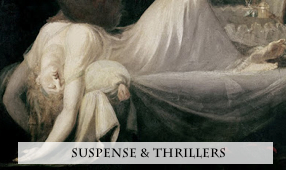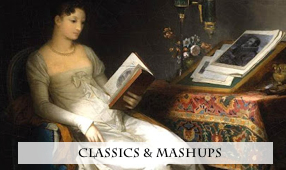Had to share with you this other cover, and perhaps more importantly information on the awe inspiring Bayeux Tapestry itself. I couldn't resist sharing the history and some photographs of the amazing tapestry for those who love art history, needlework and this period of English history.
Of course, I also wanted to share more about Ms Bower who has brought so much attention to The Bayeux Tapestry and needlework in her historical saga.
Sarah's summary of her book:
A tale of sexual obsession and the redemptive power of love inspired by the Bayeux Tapestry.
January 1067. Charismatic bishop Odo of Bayeux decides to commission a wall hanging, on a scale never seen before, to celebrate his role in the conquest of Britain by his brother, William, Duke of Normandy. What he cannot anticipate is how utterly this will change his life - even more than the invasion itself. His life becomes entangled with the women who embroider his hanging, especially Gytha - handmaid to the mistress of the fallen Saxon king and his sworn enemy. But against their intensions they fall passionately in love; in doing so Odo comes into conflict with his king and his God and Gytha with Odo’s enemies, who mistrust her hold over such a powerful man. Friends and family become enemies, enemies become lovers; nothing in life or in the hanging is what it seems.
January 1067. Charismatic bishop Odo of Bayeux decides to commission a wall hanging, on a scale never seen before, to celebrate his role in the conquest of Britain by his brother, William, Duke of Normandy. What he cannot anticipate is how utterly this will change his life - even more than the invasion itself. His life becomes entangled with the women who embroider his hanging, especially Gytha - handmaid to the mistress of the fallen Saxon king and his sworn enemy. But against their intensions they fall passionately in love; in doing so Odo comes into conflict with his king and his God and Gytha with Odo’s enemies, who mistrust her hold over such a powerful man. Friends and family become enemies, enemies become lovers; nothing in life or in the hanging is what it seems.
More biography on Ms Bower:
Sarah was born and brought up in Yorkshire but now lives in Suffolk with her husband and two grown-up sons, not to mention the two golden retrievers, three chickens and an elderly, obese cat. She works for Creative Arts East, an arts development agency in Norfolk, managing projects to promote reading and creative writing. She also teaches creative writing at the University of East Anglia, where she completed a creative writing MA in 2002. She has published fiction and non-fiction in journals as various as MsLexia and British Industry. She was short-listed for the Curtis Brown scholarship at UEA in 2001/02 and has had success in a number of short story competitions, most recently as winner of the Café Writers Short Fiction Competition 2005.
Sarah has a weakness for lost causes and spends much of her leisure time watching England play cricket. Apart from being successful as a novelist, her biggest ambition is to spend a year travelling the world with the Barmy Army.
Sarah has a weakness for lost causes and spends much of her leisure time watching England play cricket. Apart from being successful as a novelist, her biggest ambition is to spend a year travelling the world with the Barmy Army.
And now~
The Bayeux Tapestry:
This is only a very small section, of course. It shows William the Conqueror specifically, however, and the brilliance of the colors that may have been used, which is why I show it.
The colors in the preserved, authentic Bayeux Tapestry have actually faded at this point. This is a reproduction.
Here is the actual piece in the faded colors with William and his soldiers. See symbols of the saints on the bottom right (facing) Interesting that this needlewoman has taken liberties with this piece; i.e., she's mixed up the horse's leg colors, etc... while the embroiderer of the Saxon tribute below is careful in her depiction. It's believed to be that Saxon women were stitchers of The Tapestry...
This is a photograph of the actual Tapestry. The colors are faded as expected. You see the blue now as green. It depicts and says in Latin, "Here sits Harold, King of the Saxons..." and probably something about his glory or being to the glory of God.
Amazing story, symbolism, detail of court life, costume, pomp and circumstance! Note the turrets of the castle and battlements. Harold is holding the scepter and globe that the Kings and Queens of England held and still hold today in their coronations and full regalia. Beautiful robes... The animals symbolize fidelity, power and the House of Saxony, as well as other things.
While it was decided not to use gold or silver threads, the gold-toned threads tell the same story symbolically of Harold and the Archbishop's high and powerful positions on Earth and in their country.
The Archbishop here representing the Church/religion is stationed and positioned in the figurative stance of Christ on the cross.
Courtiers on Harold's left (facing) give military allegiance with the sword, while courtiers on the right (facing) with hands up and bowing stance show awe and deference.
No doubt the Tapestry is filled with such symbolism and beauty.
This is a close up of the needlework. See the layering of the stitches, meant not only to give dimension to the piece, I suspect, but to make it visible from every corner of the Cathedral and to make it last throughout the ages.
What a tribute was allowed the needlewomen that they were able to stitch their names into the sections they worked on!
From the perspective of an embroiderer, this is painstaking and beautiful work that has stood the test of time.
From the point of view of one who spent time working as an intern in Textile Conservation
at The Boston Museum of Fine Arts,
linen is the oldest fabric that has survived even from as far back as Egyptian times. So it's no wonder this linen is so well preserved. It is a testament to the dim light, or lack of strong light exposure and heat that the threads
have remained in tact as well as they have.
And, of course, The Royal School of Needlework has worked on preservation of the Tapestry in recent years, as I'm sure others have in ages past.
Some more history on The Tapestry:
Eight strips of linen appear to have been used, each perhaps being given to a different workshop. The strips would presumably be stitched together when completed. There are five main colours, terracotta red, blue-green, sage-green, buff and blue. Less frequently used are dark green, yellow, and dark blue (almost black). In laid and couched work the threads are laid in a tight mass over a given area, such as a figure. A second layer of threads (usually the same colour)is laid at right angles over this, the threads slightly spaced apart, perhaps 1/8 in. These are couched down with the same thread that holds them. The outline of the contours is worked in stem or outline stitch, which is also used for thin lines such as lettering, border lines, some scroll-work, spears, hands, faces, and many fillings such as the mail armour (conventionally shown as huge roundels rather than tiny interlinked rings). The fact that hair and horses, etc. are not always in naturalistic colours simply reflects the few colours used.
For more information and pictures of The Bayeux Tapestry go to:
The Bayeux Tapestry~Wikipedia
Thanks for coming by to see me again! I hope you enjoyed delving into this story with me further, and into the actual history of the Tapestry.
I want also to send out a very special thank you to Ms Bower for her book.
Deborah/TheBookishDame



























1 comments:
Wow! The pictures are amazing and the needlework is just AWESOME! What a wonderful and interesting book! And it was so neat to meet this author.
Share your thoughts!